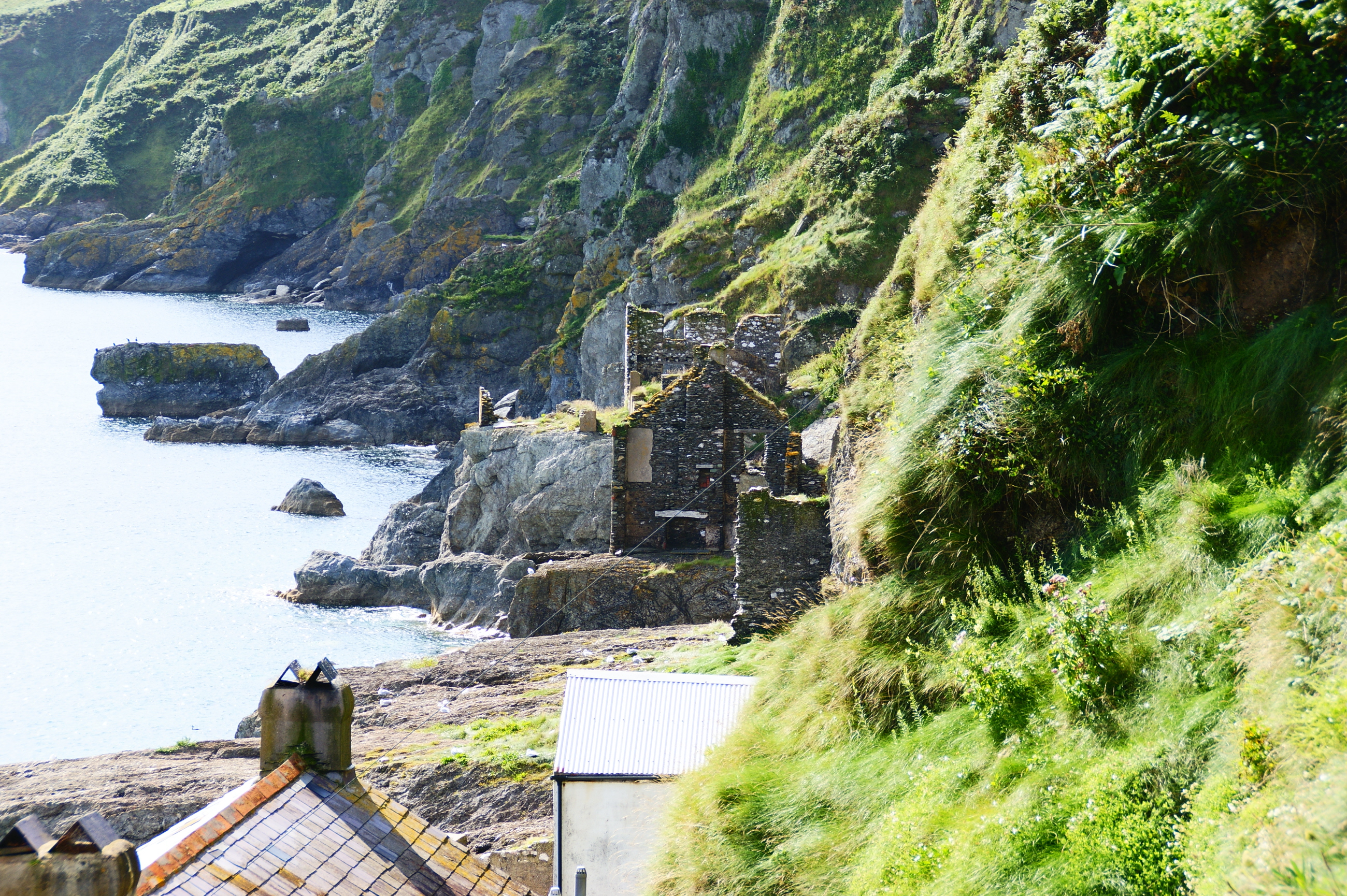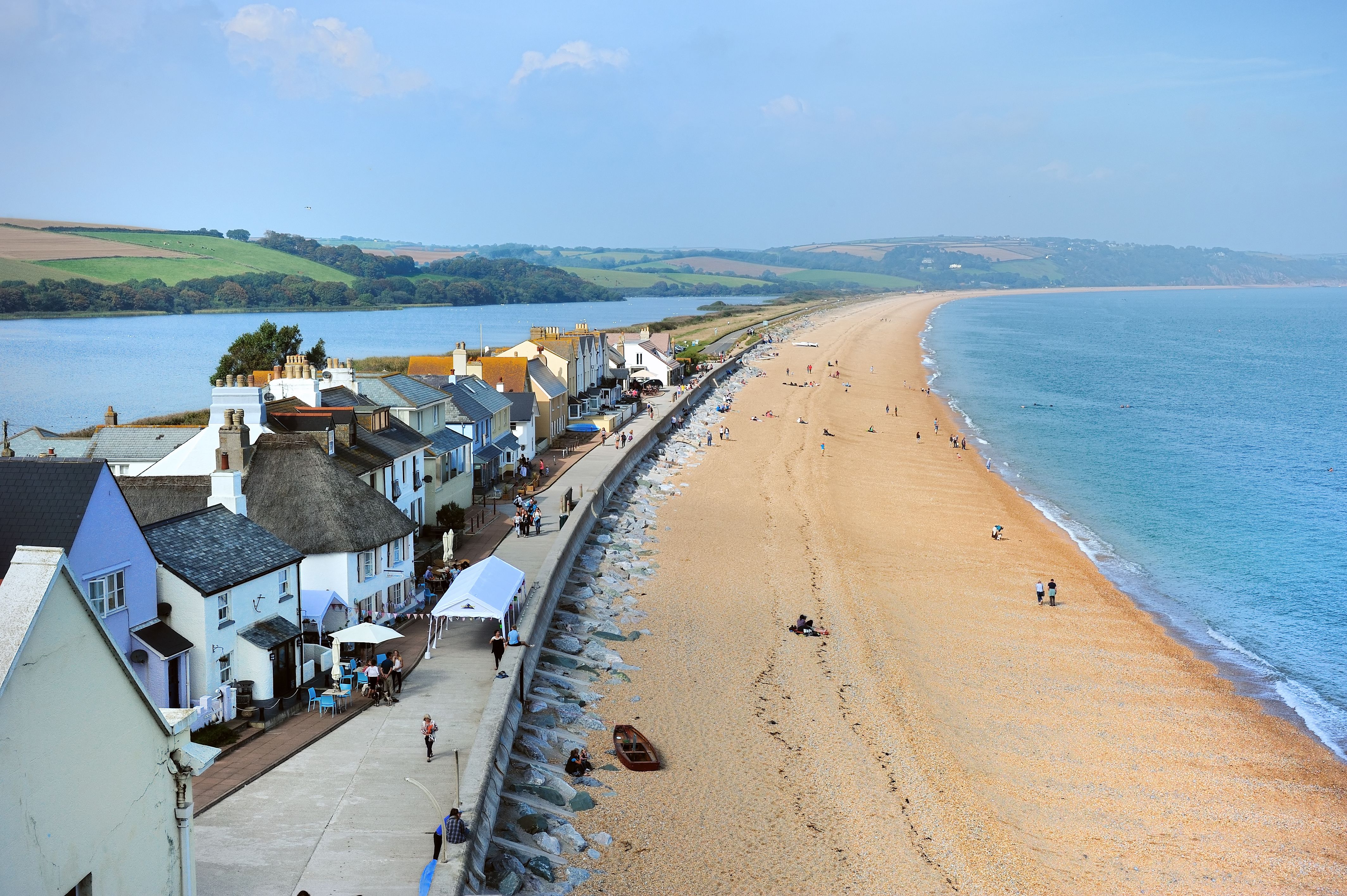|
Beesands
Beesands is a small settlement located midway between Hallsands and Torcross on the coast of Start Bay in South Devon, England. It is best known as a tourist destination, but is still a fishing village that concentrates mainly on crab and lobster fishing through Britannia Fisheries. There is an Anglican chapel dedicated to St Andrew in the village. Behind the beach, north of the settlement is a freshwater lake known as Beesands Ley, smaller but similar in ecology to Slapton Ley about a kilometre to the north. Keith Richards' family regularly spent holidays at Beesands during the 1950s. Keith Richards and Mick Jagger's first public performance was at The Cricket Inn in the village."Keith Richards: The Biography", Victor Bockris, References [...More Info...] [...Related Items...] OR: [Wikipedia] [Google] [Baidu] |
Beesands Facing North - Geograph
Beesands is a small settlement located midway between Hallsands and Torcross on the coast of Start Bay in South Devon, England. It is best known as a tourist destination, but is still a fishing village that concentrates mainly on crab and lobster fishing through Britannia Fisheries. There is an Anglican chapel dedicated to St Andrew in the village. Behind the beach, north of the settlement is a freshwater lake known as Beesands Ley, smaller but similar in ecology to Slapton Ley about a kilometre to the north. Keith Richards' family regularly spent holidays at Beesands during the 1950s. Keith Richards and Mick Jagger's first public performance was at The Cricket Inn in the village."Keith Richards: The Biography", Victor Bockris, References [...More Info...] [...Related Items...] OR: [Wikipedia] [Google] [Baidu] |
Stokenham
Stokenham ( təʊ̯kən'hæm not stəʊ̯kənəm being a break with other comparators in England) is a village and civil parish in the English county of Devon. The population of the parish at the 2011 census was 1,895. Places in the parish As well as Stokenham the civil parish includes the settlements of Torcross, Beesands, Hallsands, Kellaton, Kernborough, Dunstone, Beeson and Chillington and Bickerton. It forms part of the district of South Hams. History The village of Stokenham was known in Saxon Times as Stoc or ''Stoc Hamme'' ("meaning Stoc meadows"). By the 13th century the town was called Stoke in Hamme. An electoral ward has the same name. The ward population at the 2011 census was 1,895. In Mediaeval times St. Humbert the Confessor (d.1188AD) was locally venerated as patron saint in the town. The area was known in the 19th century for the fine crabs, and in World War II local residents were evacuated from the area, on the eve of D-day. Geography To t ... [...More Info...] [...Related Items...] OR: [Wikipedia] [Google] [Baidu] |
Hallsands
Hallsands is a village and beach in south Devon, England, in a precarious position between cliffs and the sea, between Beesands to the north and Start Point to the south. History The early history of Hallsands is unknown, but a chapel has existed there since at least 1506. The village was at a cave known as Poke Hole, and probably was not inhabited before 1600. The village grew in size during the 18th and 19th centuries, and by 1891 it had 37 houses, a spring, a public house called the ''London Inn'', and a population of 159. Most residents of Hallsands at that time depended on fishing for a living, particularly crab fishing on the nearby Skerries Bank. In the 1890s, following a scheme proposed by Sir John Jackson, it was decided to expand the naval dockyard at Keyham, near Plymouth, and dredging began offshore from Hallsands to provide sand and gravel for its construction. Soon, up to 1,600 tons of material was being removed each day, and the level of the beach ... [...More Info...] [...Related Items...] OR: [Wikipedia] [Google] [Baidu] |
Start Bay
Start Bay is a sub-bay of the nautical definition of Lyme Bay in the English Channel in south-east Devon, England. The southernmost of three substantial Devon bays facing east it is between the Mew Stone which sits east of the River Dart's estuary and Start Point near the southernmost point of the county, Prawle Point. Along it, from south to north, are Hallsands, Beesands, Torcross, Slapton Sands, Strete, Blackpool Sands and Stoke Fleming. The South West Coast Path is above much of the bay. Its north end is south of Dartmouth; its middle is east of Kingsbridge. The 4-gun Royal Navy cutter was stationed here as a patrol vessel from 1763 to 1771. A division of the US Army used Slapton Sands to rehearse the Normandy landings in 1944, but was attacked by German vessels. See also *Lyme Bay, the parent bay **Tor Bay **Babbacombe Bay Babbacombe Bay is a South-East Devon shallow, wide, continuation of the main sweep of Lyme Bay''Road Atlas of Great Britain'', Eleve ... [...More Info...] [...Related Items...] OR: [Wikipedia] [Google] [Baidu] |
Totnes
Totnes ( or ) is a market town and civil parishes in England, civil parish at the head of the estuary of the River Dart in Devon, England, within the South Devon Area of Outstanding Natural Beauty. It is about west of Paignton, about west-southwest of Torquay and about east-northeast of Plymouth. It is the administrative centre of the South Hams District Council. Totnes has a long recorded history, dating back to 907, when its first castle was built. By the twelfth century it was already an important market town, and its former wealth and importance may be seen from the number of merchants' houses built in the sixteenth and seventeenth centuries. Today, the town has a sizeable alternative and "New Age" community, and is known as a place where one can live a Bohemianism, bohemian lifestyle. Two electoral wards mention ''Totnes'' (Bridgetown and Town). Their combined populations at the 2011 UK Census was 8,076. History Ancient and medieval history According to the ''Histori ... [...More Info...] [...Related Items...] OR: [Wikipedia] [Google] [Baidu] |
Devon
Devon ( , historically known as Devonshire , ) is a ceremonial and non-metropolitan county in South West England. The most populous settlement in Devon is the city of Plymouth, followed by Devon's county town, the city of Exeter. Devon is a coastal county with cliffs and sandy beaches. Home to the largest open space in southern England, Dartmoor (), the county is predominately rural and has a relatively low population density for an English county. The county is bordered by Somerset to the north east, Dorset to the east, and Cornwall to the west. The county is split into the non-metropolitan districts of East Devon, Mid Devon, North Devon, South Hams, Teignbridge, Torridge, West Devon, Exeter, and the unitary authority areas of Plymouth, and Torbay. Combined as a ceremonial county, Devon's area is and its population is about 1.2 million. Devon derives its name from Dumnonia (the shift from ''m'' to ''v'' is a typical Celtic consonant shift). During the Briti ... [...More Info...] [...Related Items...] OR: [Wikipedia] [Google] [Baidu] |
Torcross
Torcross is a village in the South Hams district of south Devon in England. It stands at grid reference at the southern end of Slapton Sands, a narrow strip of land and shingle beach which separates the freshwater lake of Slapton Ley from Start Bay and carries the A379 coastal road north to Dartmouth. Early history The first mention of Torcross was recorded at the manorial court in the court rolls of 29 March 1602 when it was recorded that a representative of the new village reported that everything was "all well". In 1854 the coastal road between Kingsbridge and Dartmouth was built passing through Torcross giving a much needed lifeline to the community. In 1858 a coach service started between Dartmouth and Kingsbridge. WW2 evacuation and Exercise Tiger In late 1943 Torcross was evacuated, along with many other villages in the South Hams area, to make way for 15,000 allied troops who needed the area to practice for the D-Day landings. In the early hours of 28 April 194 ... [...More Info...] [...Related Items...] OR: [Wikipedia] [Google] [Baidu] |
Slapton Ley
Slapton Ley is a lake on the south coast of Devon, England, separated from Start Bay by a shingle beach, known as Slapton Sands. Slapton Ley is the largest natural freshwater lake in south-west England being long and has two sections; the Lower Ley and the Higher Ley. The ley is fed by streams and a small river, The Gara, that flows into the Higher Ley. The site is a National Nature Reserve, a Site of Special Scientific Interest and a Geological Conservation Review site. The nature reserve covers over . The A379 between the Ley and the sea runs along the shingle ridge and was rebuilt after damage by coastal erosion in the early 2000s. Ecology and wildlife The Slapton Ley nature reserve is owned by the Whitley Wildlife Conservation Trust and managed by the Field Studies Council. Slapton Ley’s beaches are affected by erosion but the beaches are formed from sediment; this makes them special because they are non-replaceable: once the sediment is moved it is gone. The beach ca ... [...More Info...] [...Related Items...] OR: [Wikipedia] [Google] [Baidu] |
Keith Richards
Keith Richards (born 18 December 1943), often referred to during the 1960s and 1970s as "Keith Richard", is an English musician and songwriter who has achieved international fame as the co-founder, guitarist, secondary vocalist, and co-principal songwriter of the Rolling Stones. His Jagger–Richards, songwriting partnership with Mick Jagger is one of the most successful in history. His career spans over six decades, and his guitar playing style has been a trademark of the Rolling Stones throughout the band's career. Richards gained press notoriety for his romantic involvements and illicit drug use, and he was often portrayed as a Counterculture, countercultural figure. Richards was born in and grew up in Dartford, Kent. He studied at the Wilmington Grammar School for Boys, Dartford Technical School and Sidcup Art College. After graduating, Richards befriended Jagger, Bill Wyman, Charlie Watts, and Brian Jones and joined the Rolling Stones. As a member of the Rolling Stones, R ... [...More Info...] [...Related Items...] OR: [Wikipedia] [Google] [Baidu] |
Mick Jagger
Sir Michael Philip Jagger (born 26 July 1943) is an English singer and songwriter who has achieved international fame as the lead vocalist and one of the founder members of the rock band the Rolling Stones. His ongoing songwriting partnership with Keith Richards is one of the most successful in history. Jagger's career has spanned over six decades, and he has been widely described as one of the most popular and influential frontmen in the history of rock music. His distinctive voice and energetic live performances, along with Richards' guitar style, have been the Rolling Stones' trademark throughout the band's career. Jagger gained press notoriety for his romantic involvements and illicit drug use, and was often portrayed as a countercultural figure. Jagger was born and grew up in Dartford. He studied at the London School of Economics before abandoning his studies to join the Rolling Stones. Jagger has written most of the Rolling Stones' songs together with Richards, and the ... [...More Info...] [...Related Items...] OR: [Wikipedia] [Google] [Baidu] |
Villages In South Hams
A village is a clustered human settlement or community, larger than a hamlet but smaller than a town (although the word is often used to describe both hamlets and smaller towns), with a population typically ranging from a few hundred to a few thousand. Though villages are often located in rural areas, the term urban village is also applied to certain urban neighborhoods. Villages are normally permanent, with fixed dwellings; however, transient villages can occur. Further, the dwellings of a village are fairly close to one another, not scattered broadly over the landscape, as a dispersed settlement. In the past, villages were a usual form of community for societies that practice subsistence agriculture, and also for some non-agricultural societies. In Great Britain, a hamlet earned the right to be called a village when it built a church. [...More Info...] [...Related Items...] OR: [Wikipedia] [Google] [Baidu] |
Beaches Of Devon
A beach is a landform alongside a body of water which consists of loose particles. The particles composing a beach are typically made from rock, such as sand, gravel, shingle, pebbles, etc., or biological sources, such as mollusc shells or coralline algae. Sediments settle in different densities and structures, depending on the local wave action and weather, creating different textures, colors and gradients or layers of material. Though some beaches form on inland freshwater locations such as lakes and rivers, most beaches are in coastal areas where wave or current action deposits and reworks sediments. Erosion and changing of beach geologies happens through natural processes, like wave action and extreme weather events. Where wind conditions are correct, beaches can be backed by coastal dunes which offer protection and regeneration for the beach. However, these natural forces have become more extreme due to climate change, permanently altering beaches at very rapid r ... [...More Info...] [...Related Items...] OR: [Wikipedia] [Google] [Baidu] |






